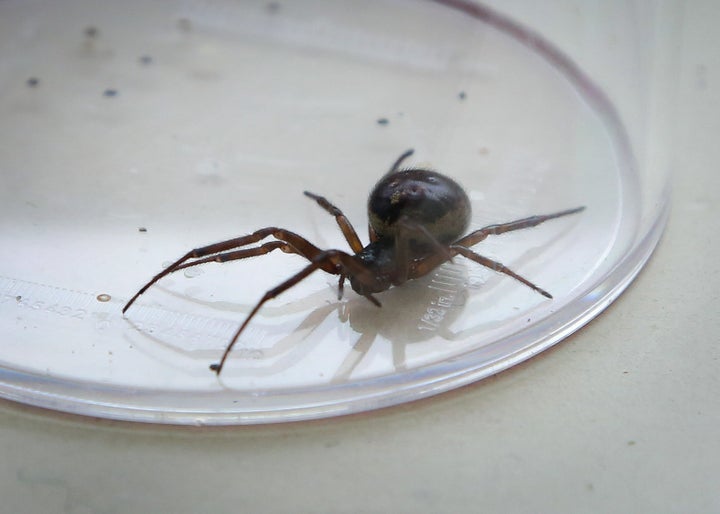At least four schools in east London have been forced to close due to false widow spider infestations, with pest control specialists being brought in to deal with the issue. In the meantime, students are working remotely and some schools are expected to be shut for a month.
Since September (also known as spider season), the eight-legged arachnids have been heading indoors to find a mate – in fact, you might have had to remove a few from your home already.
But how can you tell a false widow from your average house spider, and what should you do if you find one in your home or garden? We asked a spider pro.

What do false widows look like?
Professor Adam Hart, a biologist from the University of Gloucestershire, says the false widow is often confused for similar species. “Of the 100+ photos I have been sent only one was a noble false widow,” he tells HuffPost UK.
“They are not especially large spiders – a 1cm long body at most – and they have a brown, quite swollen-looking abdomen with off-white markings that have been likened to a skull, although these can vary.”
Do they have nests?
Prof Hart says the idea of spider nests is a myth. “Spiders don’t have nests in the way that people think,” he explains. “There are not hundreds of spiders living together in some colony in the attic. They are generally solitary creatures and a good habitat (like your house) might attract a few but they are not working together and aren’t out to get you.” Always good to know.
What should you do if you see one in your home?
If you’re terrified of spiders then it might be worth calling a pest control expert, however in most cases Prof Hart recommends just putting it outside yourself.
You can do this using the old glass and cardboard trick – simply place a glass over where the spider is (be careful not to trap its legs) and slowly slide a piece of cardboard underneath the spider so that you trap it in the glass. Then, take it outside and release it.
If the spider is already outside and you see it, Prof Hart recommends leaving it well alone. “Spiders are incredibly important predators and they deserve our respect,” he says. “The fear-mongering around false widows is completely unjustified and while yes, they can bite, such bites are incredibly rare and very seldom result in anything other than a bit of pain around the bite site.”
For a bit of reassurance, the Professor says he knows spider biologists who have handled the spiders for 30 years and have never been bitten.
What to do if you are bitten.
Spider bites in the UK are rare and not something to worry about too much.
“The false widow story is a scare story more or less invented by the tabloid press in the UK a few years ago,” says Prof Hart. “They’ve been in the UK for decades and the ‘horror’ photos of alleged spider bites are bacterial infections from wounds that, as far as I can tell, are never reliably linked to a spider.”
A spider bite will often leave two little puncture marks in the skin, so if you’re bitten then, chances are, you’ll be able to diagnose it yourself.
The false widow’s bite isn’t dangerous – unless you have an allergic reaction or it becomes infected. A bite might cause a bit of pain which lasts between one and 12 hours, but rarely more than 24 hours. It’s usually no worse, in terms of pain, than a wasp sting.